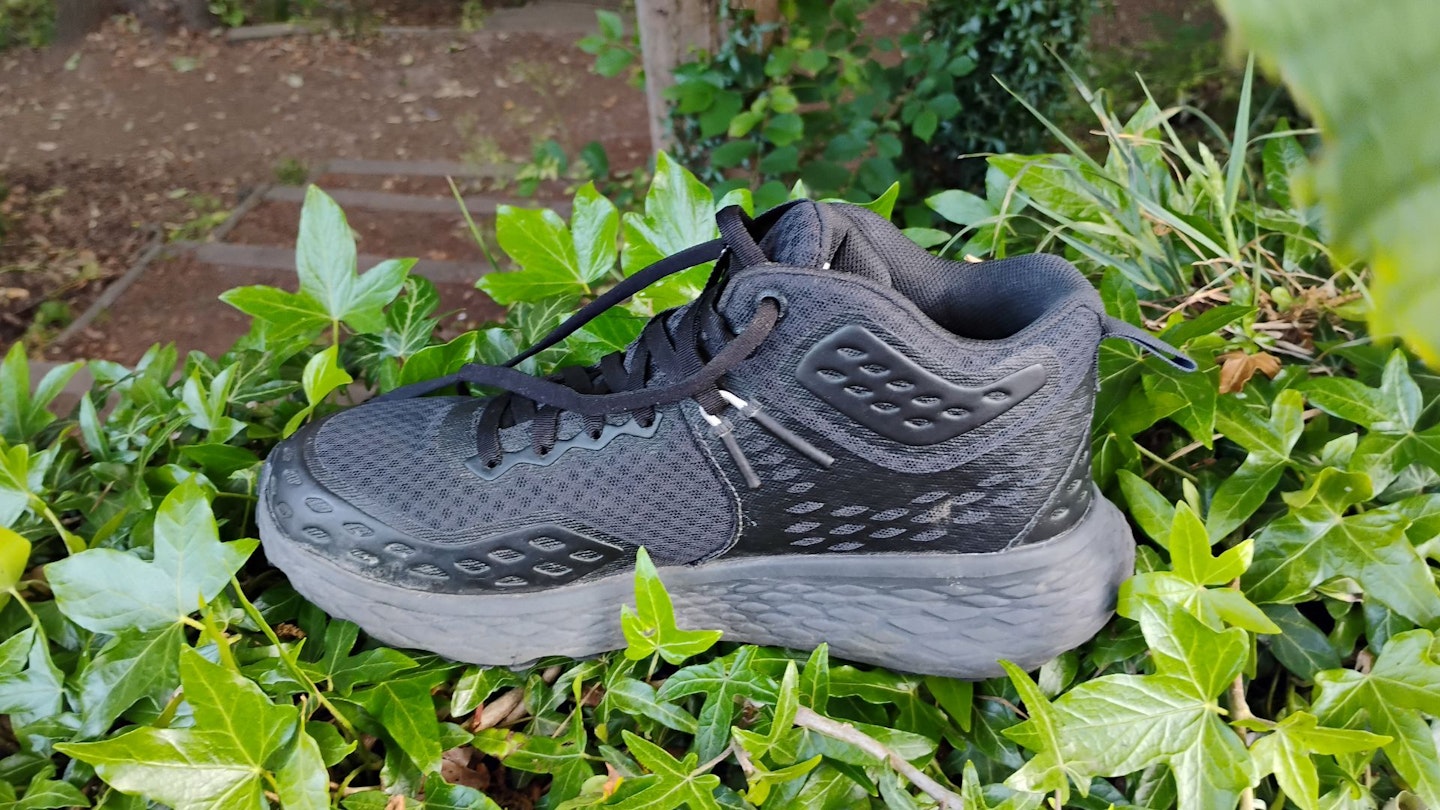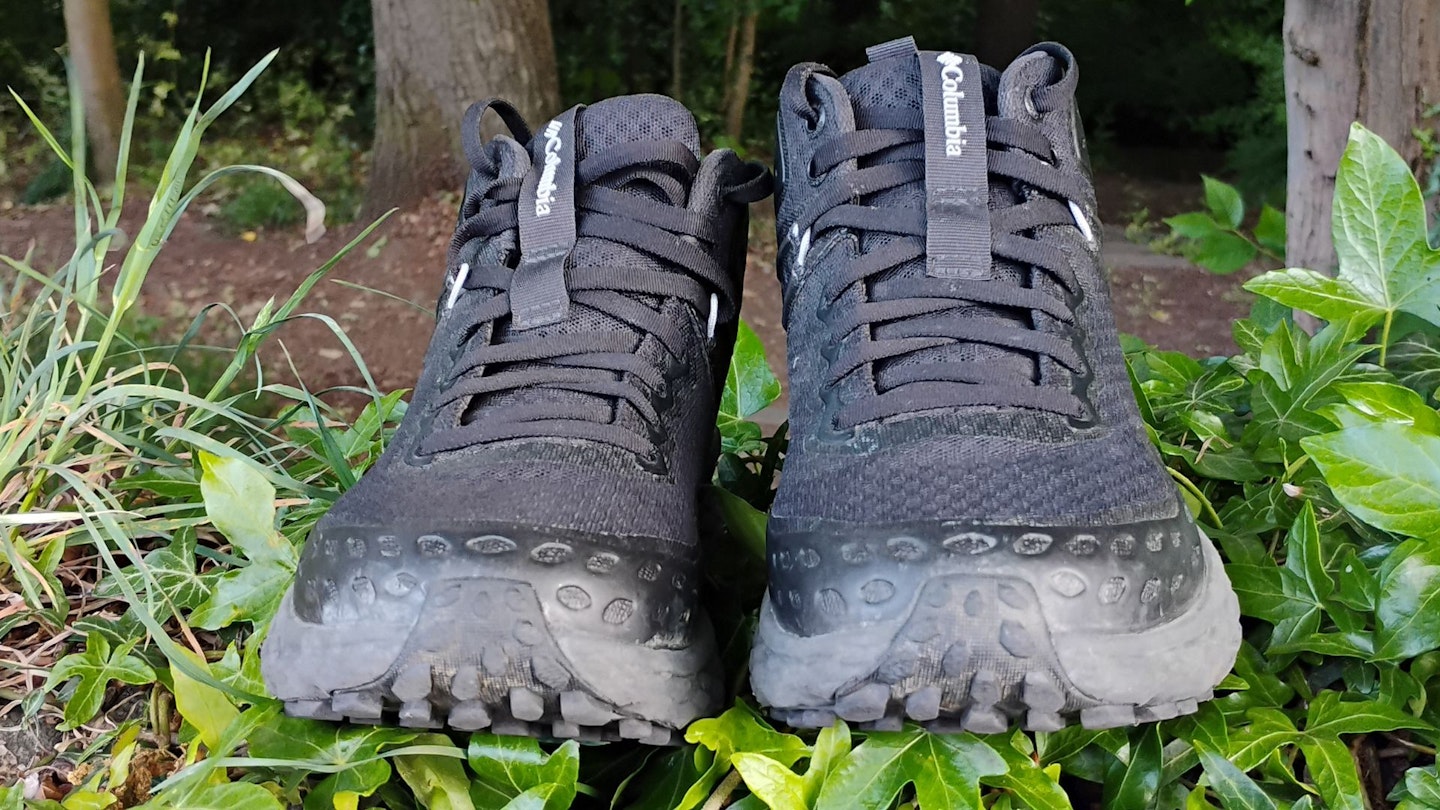The Columbia Konos TRS OutDry Mid takes the comfort of a hiking shoe and adds a small dose of supportive boot and speedy trainer, ending up a weirdly effective Frankenstein – with a jumbled name to suit.
What you essentially have here is a lightweight budget walking boot. It’s geared towards fastpacking – not merely getting from A to B on two feet, but trying to do so in the quickest way possible, helped by the lightest gear possible.
More and more, hikers are eschewing the traditional leather walking boot, opting instead for a lightweight shoe. As the rest of our gear, from sleeping mats to two-person tents, has become lighter, we’ve realised that what we wear on our feet might not need to be so heavy.
A popular route to the lightweight boot arena is to transform a hiking shoe into a mid boot, which is what Columbia appears to have done with the Konos TRS OutDry Mid Shoe (this is the last time I’m spelling it out in full, it’s now the Konos Mid).
Find the men's version here.
Pros
- Very lightweight
- Super cushioned
- Decent grip on rock
- Good value
Cons
- Not very breathable
- Less supportive than a rigid boot
- Question marks over long-term durability
| RRP: | £115 / $130 |
| Upper: | 100% polyester |
| Sole: | 100% rubber |
| Men's sizes: | UK 6-14 |
| Women's sizes: | UK 3-10 |
| Weight (per boot): | 318g / 11.2oz (UK 6) |
They’re certainly light: at 318g per shoe for the UK 6, these boots are only a dozen grams heavier than my La Sportiva LycanGTX trail running shoes. Contrastingly, my hiking boots are almost double the weight of the Konos Mid. So they’ve clearly got more in common with a shoe than a boot. Why not just get a shoe, then?
For a similar price, you can get the Konos OutDry Shoe, which is almost identical apart from going up to, and not beyond, your ankle. Conventional wisdom dictates that shoes are more agile, while boots have better ankle support, which is suited to heavy packs and rugged terrain.
Lightweight hiking boots are new territory, though. Can the Konos Mid really be agile but still supportive, or are you just getting the worst of both worlds?
To find out, I put these shoes to the test on regular Peak District walks and climbing approaches, even venturing as far as North Yorkshire.
Upper and fit

Looking at the upper of these shoes, it’s clear that low weight is the main priority. The upper consists of a mesh lining, reinforced by ‘no-sew overlays’ – sections of tougher material fused to the mesh. The point of these overlays is to boost durability, but they aren’t particularly substantial.
After testing these on several drizzle-smattered walks, I’d say Columbia's OutDry waterproof membrane works well. The downside is that they’re not very breathable, the consequence of which is slow drying times and sweaty feet.
On a warm climbing approach, my feet overheated quickly. The black colour of the shoes I tested probably also contributed to this, but I think even with the lighter colourways this would be an issue. If you’re looking for a hiking shoe for the summer months, I’d approach the Konos Mid with caution.
As these are boot-shaped, it’s easy to lace them up snugly. This helps to hold your foot in place around the arch and mid-foot, maintaining a stable position. And compared to other hiking boots, the toe-box is wide, which is helpful for foot expansion.
Although there’s a comfy pad around the ankle, the upper flexes easily, which makes these shoes less supportive than a rigid hiking boot. However, on uneven terrain you’re probably still better-protected than in a hiking or trail running shoe, as the upper acts as a brace.
Midsole

The Konos TRS OutDry Mid has a super-cushioned heel, with a pronounced taper towards the toe. This means that as you propel yourself forwards, the energy is efficiently transferred to the front of your foot. Largely thanks to this substantial cushioning, I found that my feet didn’t get so tired, even after walking in them all day.
Some people find highly cushioned shoes more unstable – your feet are platformed above the ground, increasing the risk of ankle rolls. If you’re used to shoes without much cushioning, you might find the Konos Mid disruptive.
Columbia doesn’t provide a heel-toe-drop measurement, as this is more commonly highlighted in running shoes, but I’d wager it’s higher than most. A high-drop can sometimes put more pressure on the knee and quads. However, if you have problems with your achilles, it might suit you well – though we’d always recommend consulting an expert.
If this deters you from a cushioned shoe, you might prefer a traditional but still lightweight boot, like the La Sportiva TX Hike Mid GTX. But most lightweight hiking boots tend to have chunky midsoles, especially those from running-focussed brands like Hoka and Inov8 (see, for example the Inov8 Roclite Mid GTX or the Hoka Anacapa Breeze).
Outsole

The lugs on the underside of these shoes provide decent traction on rocky terrain. Clambering between large rocks which slant downhill, with a bouldering pad on my back, I found I could trust them not to slip.
Columbia’s VP of innovation, Dr Haskell Beckham, explains that the lugs are “biomechanically consistent with the primary pressure points under the foot for more stability”. In other words, they’re adapted to the pressure you apply – and you do seem to get a stable ride.
In between the lugs, there are grooves that help the foot to flex. This helps the shoe to mimic the natural movement of the foot. However, this makes me wonder whether the Konos Mid would be durable on rugged terrain, as they’re no way near as stiff as a traditional walking boot.
It’s not the kind of tread that aggressively digs into damp, muddy terrain. Neither are the lugs as deep as those on approach shoes. So while they provide decent traction on rocky ground, they’ll wear down quicker if used repeatedly on rugged terrain.
Price, competition and value

The Konos TRS OutDry Mid boots have an RRP of £115 ($130), though at the time of writing they’re reduced to much less. The average price of the options reviewed in our budget hiking boots group test is £117, so they fit comfortably in this camp.
The Konos Mid is lighter than most of the options in this test, though many of these are more geared towards rugged terrain. Take, for example, the Jack Wolfskin Vojo 3 Texapore Mid, which won ‘best in test’ thanks to its chunky lugs.
What you’re paying for is a lightweight boot that performs reasonably well on mixed terrain – for this, I think the price is reasonable. If you pay a bit more, you can get more of a serious mountain shoe, though this won’t be for everyone.
For context, the average RRP of our lightweight hiking boots group test is £164. The ‘best in test’, the Scarpa Rush 2 Mid GTX, is geared towards rugged terrain, with a proper toe bumper, thick PU overlays and a stiffened toe cap.
Verdict
The Columbia Konos TRS OutDry Mid is a lightweight boot that’s well-suited to fast hiking, particularly in cold and wet conditions. It’s not as durable or protective as a heavier boot, so won’t perform as well on multi-day hikes on rugged terrain. But for moderate day hiking on mixed terrain, it performs reasonably well – and it won’t break the bank, either.
Shop this product
About the author

LFTO writer Evie has strained her cardiovascular system on many a steep incline, having hiked in over ten countries across Europe and beyond. She's a big fan of the long-distance GR routes, her favourites being the GR20 in Corsica, GR221 in Mallorca and GR52 in the Alps.


